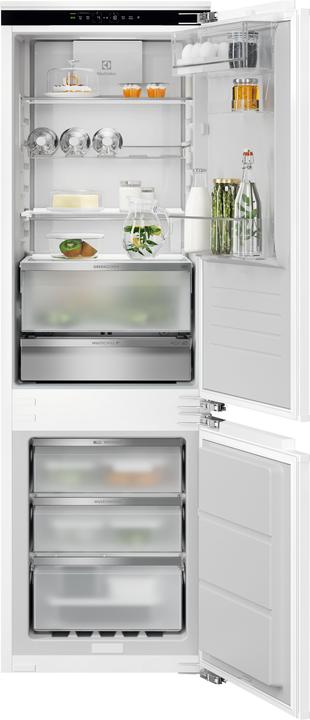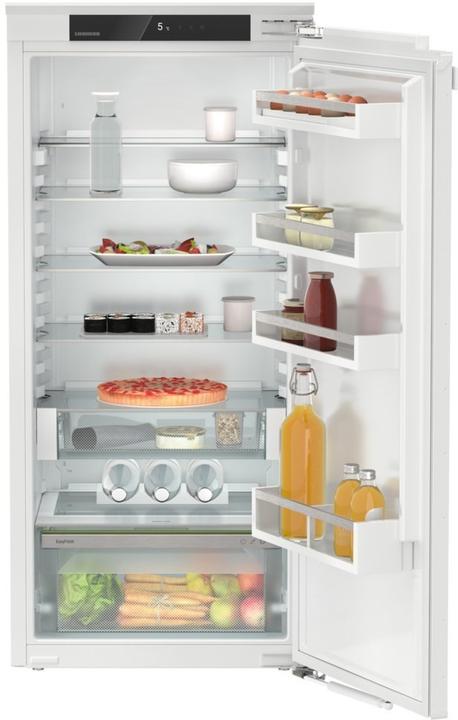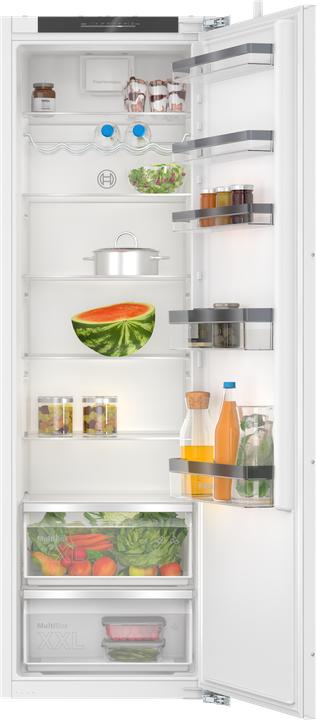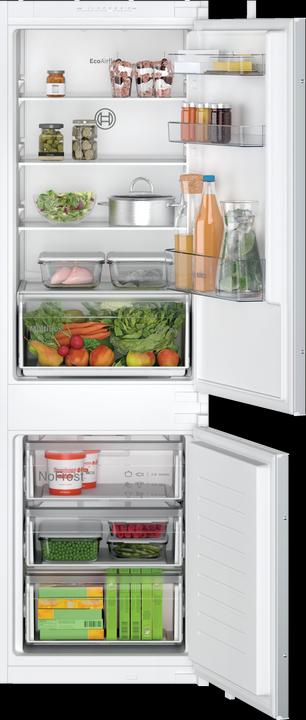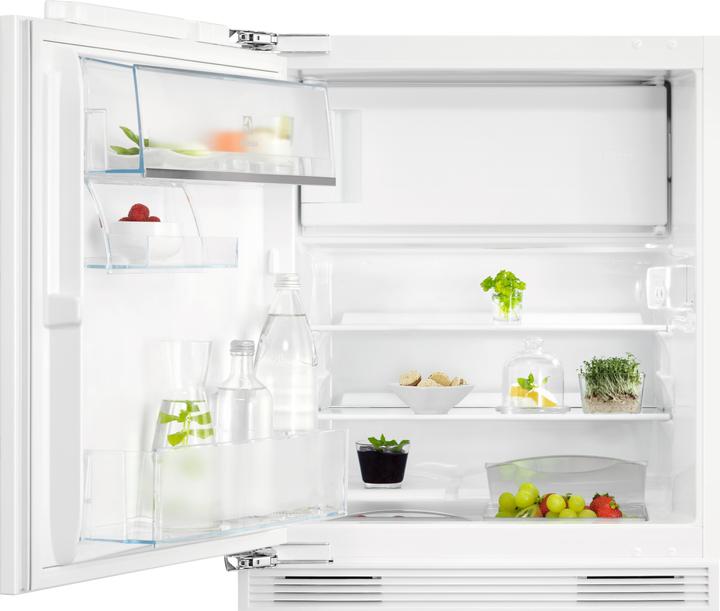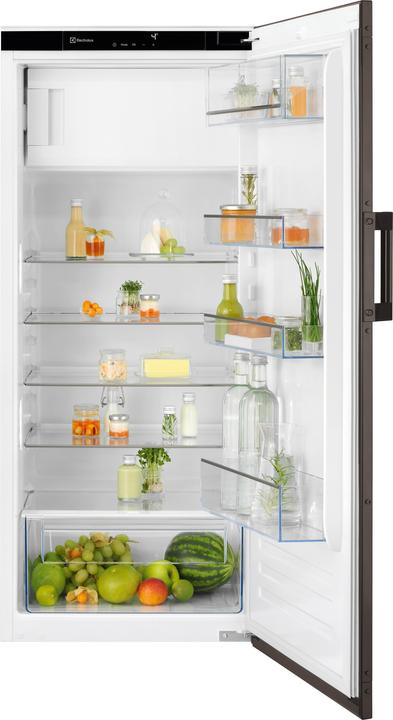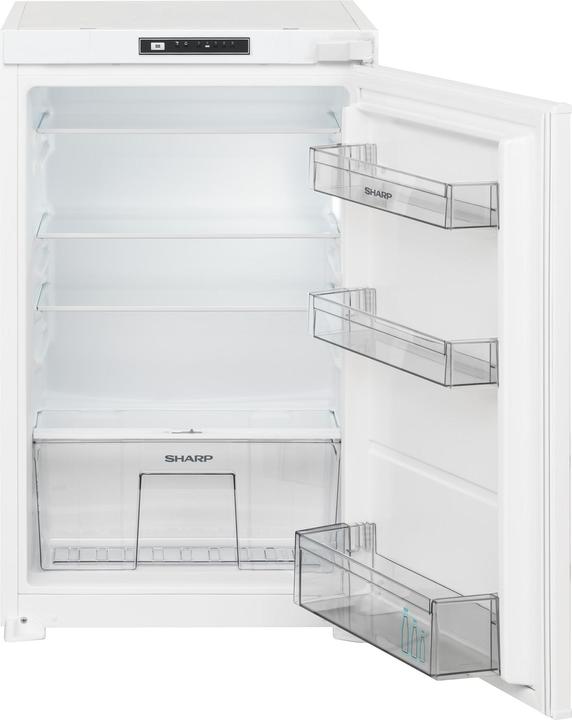
Too Many Built-in Fridges? Here's How to Choose the Right One
Discover five key considerations to help you select the perfect built-in fridge for your needs.
Last updated 1 week ago. Automatically generated content.
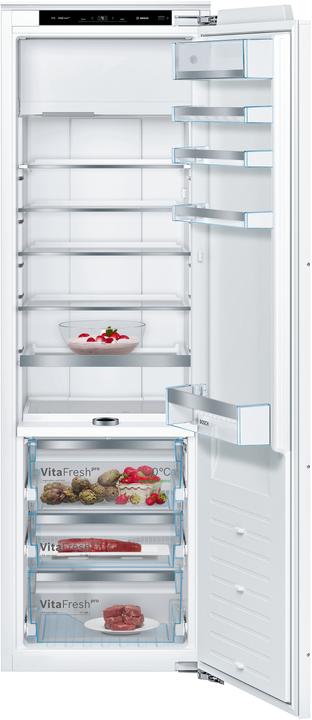

Select options and limit the number of products
Total capacity refers to the volume of space inside a built-in fridge, measured in liters. It is crucial for ensuring the fridge can adequately store the amount of food and beverages needed for your household, impacting convenience and efficiency in food storage.
Popular options
Up to 150 l
Typical price
520.– to 890.–Compact size suitable for small kitchens or limited space.
Ideal for individuals or couples with minimal storage needs, offering efficient space usage.
Bestseller
151 - 250 l
Typical price
750.– to 1600.–Moderate capacity catering to small families or shared living situations.
Provides a balance between size and storage, accommodating a wider range of items without taking up excessive space.
Bestseller
251 - 350 l
Typical price
1000.– to 2100.–Generous capacity perfect for larger families or those who stock up on groceries.
Ensures ample space for diverse food items, reducing the need for frequent shopping trips and enhancing convenience.
Bestseller
The energy efficiency class of a built-in fridge indicates its energy consumption level, impacting both environmental footprint and electricity costs. Choosing a fridge with a better efficiency class can lead to significant savings on energy bills and contribute to sustainable living.
Popular options (you can select more than one)
B
Typical price
1700.– to 2400.–Offers moderately good energy efficiency, balancing performance and cost.
Suitable for those who want a reasonable energy-saving option while maintaining effective cooling.
Bestseller
C
Typical price
1600.– to 2700.–Provides average energy efficiency, with higher consumption compared to more efficient models.
Ideal for buyers prioritizing upfront cost over long-term energy savings.
Bestseller
D
Typical price
840.– to 1600.–Lower energy efficiency, often resulting in higher electricity bills.
Recommended for environments where energy consumption is less of a concern, such as occasional use.
Bestseller
E
Typical price
680.– to 1400.–Least energy-efficient option, leading to significant energy consumption.
Best suited for situations where energy cost is not a primary concern, or for short-term use.
Bestseller
Refrigerator type refers to the configuration of the fridge, determining its storage capabilities and layout. Choosing the right type is crucial for accommodating your specific food storage needs and kitchen space, impacting convenience and efficiency.
Popular options (you can select more than one)
Fridge with freezer compartment
Includes a built-in freezer compartment, offering combined refrigeration and freezing capabilities.
Ideal for those with limited kitchen space, providing versatility for storing both fresh and frozen goods.
Bestseller
Fridge without freezer
Excludes a freezer compartment, focusing solely on refrigeration.
Perfect for those who require maximum fresh food storage and already have a separate freezer unit.
Bestseller
Special features in built-in fridges enhance functionality and convenience, playing a significant role in optimizing food preservation. These features contribute to user-friendly experiences and efficient food management, making daily life easier.
Popular options (you can select more than one)
Automatic defrost
Typical price
710.– to 1600.–Automatically melts accumulated frost, preventing ice build-up.
Saves time and effort by eliminating the need for manual defrosting, ensuring consistent cooling performance.
Bestseller
No Frost System
Typical price
990.– to 1800.–Prevents frost formation by circulating dry air inside the fridge.
Ensures uniform cooling and eliminates the need for defrosting, maintaining optimal storage conditions for food.
Bestseller
Fresh Zone compartment
Typical price
800.– to 1800.–Maintains lower temperatures for specific compartments to preserve freshness.
Ideal for storing fruits, vegetables, and meats, enhancing their shelf life and taste.
Bestseller
Adjustable shelves
Typical price
710.– to 1400.–Allows customization of shelf height and arrangement to fit various items.
Maximizes storage flexibility, accommodating larger or irregularly shaped products with ease.
Bestseller
Fitting type indicates how a built-in fridge is installed within kitchen cabinetry, affecting aesthetics and accessibility. Choosing the right fitting type is essential for seamless integration with kitchen design and maximizing space efficiency.
Popular options (you can select more than one)
Fully integratable
Typical price
940.– to 1900.–Designed to be concealed behind cabinet doors for a uniform look.
Ideal for maintaining a sleek and uninterrupted kitchen design.
Bestseller
Integrable
Typical price
640.– to 1500.–The fridge's front remains visible while other sides are covered by cabinetry.
Offers easy access and visibility, blending functionality with style.
Bestseller
Built-under
Typical price
710.– to 890.–Fits under the countertop, optimizing lower cabinet space.
Great for compact kitchens, saving space while providing convenient access.
Bestseller
High installation
Typical price
1000.– to 1600.–Installed at eye level for easy access without bending.
Perfect for tall cabinets, enhancing accessibility and visibility.
Bestseller



